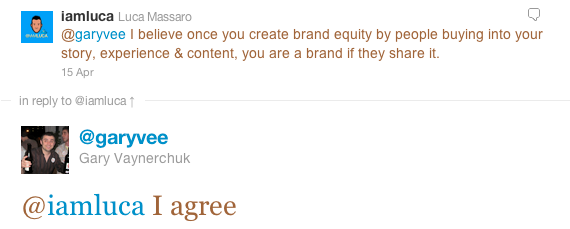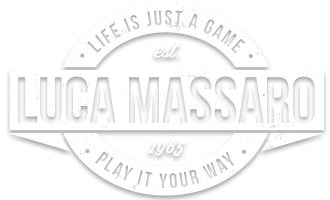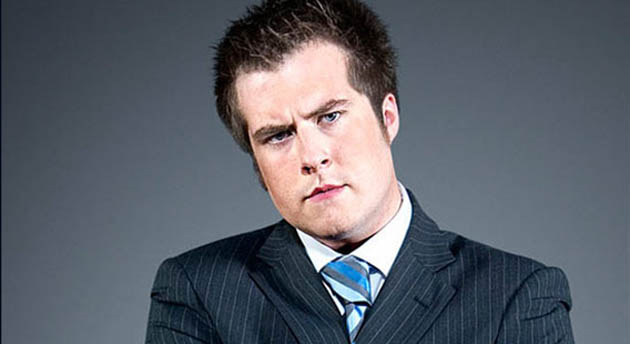With every conference, meeting, seminar and expensive dinner I attend there is a discussion about the future of digital and of social media.
To try and get an idea of where the space is heading it’s important to take a step away from the details, the platforms, the tools and all the blogs/sites we are reading to inform us and to look at the current situation from an overview.
Fundamentally, the way in which we communicate has been enhanced. It’s not a revolution as such but an evolution.
When William Gibson coined the phrase ‘cyberspace’, he described the evolution of technology and the vision he saw of an online world developing. In Gibson’s 1984 novel “Neuromancer”, the author first presented his vision of an entire global computing network which operated like an actual cyber world. It was supposed to be a whole separate universe with constantly updated content, a virtual marketplace of ideas where people from every corner of the globe could connect in a meaningful way, pretty much what we see today.
At present we are seeing is a shift in command from the original gatekeepers and keyholders being employers, advertisers and media to a world where the people hold the keys to not only their own destiny, but also to those around them.
When Seth Godin spoke about the ‘tribes’ we create, he spoke of leading, connecting and spreading ideas. He spoke of the ability to have a market that you actually believe in. The shift from where manipulated content governed the decisions we made and the products we purchased; now it’s all about choice and asking questions of yourself.
So there I am, away from the noise and I’m reading Gary Vaynerchuk’s book ‘Crush It!’ Towards the end of the book I found a passage that validated the direction of the way the space is evolving and tweeted it.
[singlepic id=65 w=320 h=240 float=center]
What then followed was a variety of opinions and comments. Some people agreed and retweeted, while others replied feeling the complete opposite to that statement.
[singlepic id=73 w=320 h=240 float=center]
That’s a valid point, however…
[singlepic id=70 w=320 h=240 float=center]
For those of us that set up online profiles and blogs so that we can express our opinion to our audience, we are doing so with the understanding that we need to build brand equity.
While a brand in it’s traditional sense may be based around the product that we purchase from a store; this in essence is the same thing when we create websites, develop content and market the material to our target audience. We develop ourselves as the product and look for our audience to convert by commenting and sharing.
As I explained my theory on this subject via twitter and across the office at work, I was met with a barrage of opposite view points, some of which highlighted this video of one Stuart Baggs from the Apprentice (feature image).
It appeared to me that traditional marketers and those that may not use the internet and all it’s glory to build their own profiles believe that people are not brands and should not be described as such.
I then thought it would only be right if I contacted Gary Vaynerchuk himself for his thoughts seeing as it was his quote that sparked off this whole subject.
[singlepic id=64 w=320 h=240 float=center]
I then responded to his tweet..
[singlepic id=68 w=320 h=240 float=center]
and added my 140 character summary..

You see Gary agrees so it’s unanimous. The way the landscape has evolved means there are opportunities for anyone to create brand equity for themselves. We are seeing celebrities and those with media profiles in the public domain learn the importance of building brand awareness and working out how they can monetize it.
Take for example Robbie Savage. With no disrespect to Mr Savage, but who is he really? Yet on Twitter he boasts over 250,000 followers. What Robbie has in abundance is a marketable personality and he fully appreciates the power of building personal brand equity. He isn’t a world class footballer like Rio Ferdinand, but Robbie Savage has created opportunities from building brand equity.
Rio Ferdinand has done exactly the same, hence why he has his own magazine, television shows and shares in various companies.
Yes these are sports stars so what about the rest of us?
Each of us who develop content and distribute our voice across the variety of social platforms have brand equity. We just have to work out who our core audience is. By understanding your audience or ‘stigma’ you can develop your brand accordingly, build your network and develop your content knowing that your target market is fully engaged.
Here are a few key pointers that I think can assist you in the early stages. Make a list of:
- all of your key influencers ie: the ones with the largest followings, the ones who engage the most or the ones who command respect when they broadcast.
- all the key words that relate to you and your personal brand.
- all the networks that you use ie: Twitter, Facebook, YouTube, Blogs, Forums and of course the networks in real life.
Once you have jotted down the above details, create a mind map using all of the above outlining out all the key influencers, link them to the key words and which networks they use the most. There’s a really cool application for Mac, iPad and iPhone called Mind Node which I use to do these.
The tipping point is to find ‘critical mass’ which is a term that describes the small tweaks in your marketing campaign that shift the boat in your favour, where the reaction is then made ‘viral’. This can be achieved through a variety of ways, but ultimately comes down to understanding who, where, what and why your audience is talking about the relevant topics.
Robbie Savage found critical mass by making jokes and banter with both his core influencers and the general public on twitter, Gary Vaynerchuk found it by video blogging about wine and being generally very loud and different with his speaking.
People are becoming brands and it’s only a matter of time before everyone realises it. For those that don’t agree; see you in 2015.

